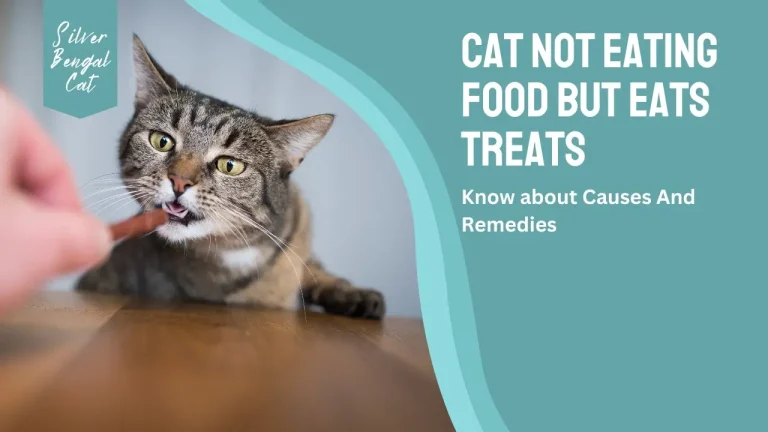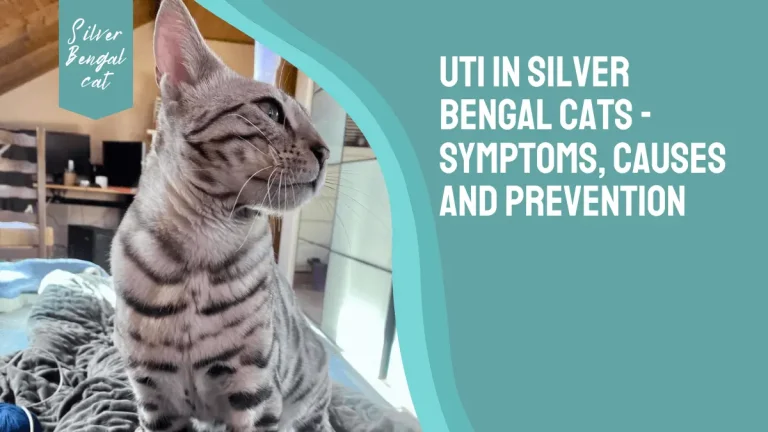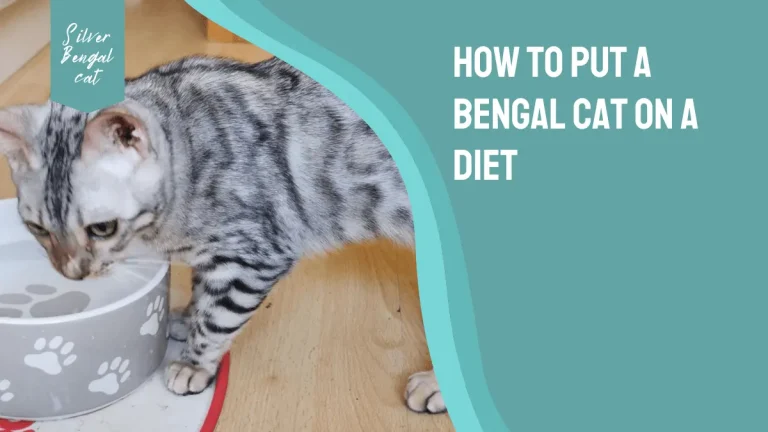Do Bengal Cats Shed? Minimizing Allergens & Keeping Home Clean

If you’re considering getting a Bengal cat, you may wonder about their shedding habits. The question “Do Bengal Cats Shed?” is common among cat lovers. Bengal cats are known for their beautiful coat patterns and playful personalities, but like any cat, they shed.
The amount of shedding can vary between individual cats, but there are steps you can take to minimize it and keep your home clean. In this article, we’ll explore Bengal cat shedding habits and provide tips for managing shedding if you decide to bring one of these feline friends into your home.
.
Understanding Bengal Cat Shedding

Like all mammals, Bengal cats naturally shed their hair as part of their growth cycle. Shedding old hair makes room for new hair to grow. Bengals shed their hair for several reasons, including getting rid of unkempt, damaged, or extra hair and regulating body temperature.
Interestingly, despite being a breed with short hair, Bengals still shed a moderate amount of hair. This is in contrast to longhaired breeds such as Persian and Ragdoll cats, which shed more.
Bengal cats may experience increased shedding after giving birth due to hormonal changes called postpartum shedding or alopecia. This shedding can last for weeks or even months but is a natural part of postpartum recovery. Providing a healthy diet, fresh water, and regular grooming can help reduce shedding.
Factors That Influence Shedding In Bengal Cat
Several factors can influence Bengal cat shedding. These include:
1. Unfavorable Living Environment
The living environment of Bengal cats can also affect their shedding. Bengals in a warmer climate may shed more to regulate their body temperature, while living in colder climates may not cause shedding as much.
Additionally, cats living in homes with central heating and air conditioning may have a more regulated environment, which could affect their shedding.
2. Allergies Can Cause Shedding
Bengals are allergic to certain environmental particles, including insect stings, some flowers or specific ingredients in food. The most common allergens are:
- Grains
- Dairy products (milk, cheese, or even lactose-free milk)
- Eggs
Learn more about Flowers Which Are Allergic To Bengal Cats.
3. Shedding After Pregnancy
It’s completely normal for Bengal cats to shed after pregnancy due to hormonal changes. Consequently, this shedding can last for weeks or months but is a natural part of postpartum recovery. Regular grooming, physical activity, and a healthy diet can help them through this natural process.
Do Kittens Shed? What Every Cat Parent Should Know
Kittens experience shedding, but typically less than adult cats. It’s a natural process as they grow and develop their adult fur. Shedding can vary among kitten breeds and individuals. Regular grooming aids in managing shedding and maintaining a healthy coat. As kittens grow, their shedding patterns may evolve, making early grooming routines essential.
4. Overall Health Issues
The overall health of a Bengal cat can also impact shedding. If a Bengal cat is stressed, ill, or not getting proper nutrition, it could affect its hair growth cycle and cause more shedding.
The most common health issues that lead to hair loss in Bengal cats include:
- UTI
- Kidney disease
- Upper respiratory infections
- Liver problems
- Cancer
However, even for the new owners, this shouldn’t be a cause for concern because Bengals are typically a healthy breed with almost no significant health issues.
5. Seasonal Shedding
The season can also influence shedding in Bengal cats. Bengal cats usually experience two major shedding seasons during spring and fall, but they shed moderately less than many other cat breeds. Some cats may shed more during the spring and fall when their hair growth cycle naturally changes. This ‘seasonal shedding’ is accepted as normal.
6. Substandard Diet
Substandard cat food lacks essential nutrients, leading to nutritional deficiencies. This can result in dry and brittle fur, causing excessive shedding and poor coat quality in Bengal cats.
On the other hand, high-quality cat food provides balanced nutrition, promoting healthy skin and coat, reducing shedding, and ensuring overall well-being. Feeding Bengal cats quality food is crucial to maintaining their glossy coats and minimizing shedding issues.
7. Intestinal Worms
The worms commonly found in Bengal cats are called intestinal worms – they can cause excessive shedding in Bengals. They can include various types:
- Roundworms (Toxocara cati, Toxascaris leonina)
- Hookworms (Ancylostoma species)
- Whipworms (Trichuris species)
- Tapeworms (Dipylidium caninum, Taenia species)
These worms often result from a poor diet or when cats consume unhygienic or spoiled substances outdoors.
8. Coat Characteristics Of Different Bengals
The characteristics of a Bengal cat’s coat, such as color and density, can also impact shedding. Bengals with lighter colored fur may appear to shed more than darker colored ones.
For instance, Marble Bengal Cats have a more luxurious and dense coat with well-defined swirls and patterns, which increases the amount of shedding. Likewise, Rosetted Bengal Cats have a coat pattern that forms distinct spots or rosettes, and their fur can be denser due to the rosettes’ concentration.
9. Stress and Anxiety
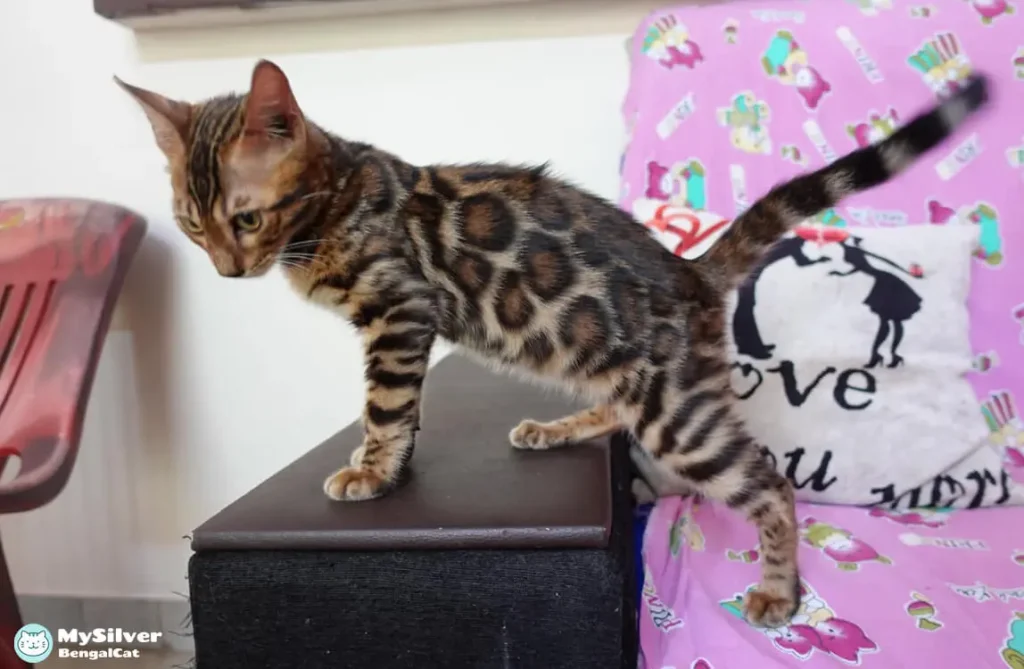
Excessive shedding in Bengals can be primarily attributed to stress and anxiety, which may arise from various factors, including:
- Relocation to a new home
- Excessive noise exposure
- The arrival of a new family member
- Fearful situations
- Feelings of loneliness and neglect
- Lack of physical activity
Tips For Managing Shedding In Bengal Cats
To reduce shedding in Bengal cats, you can try the following:
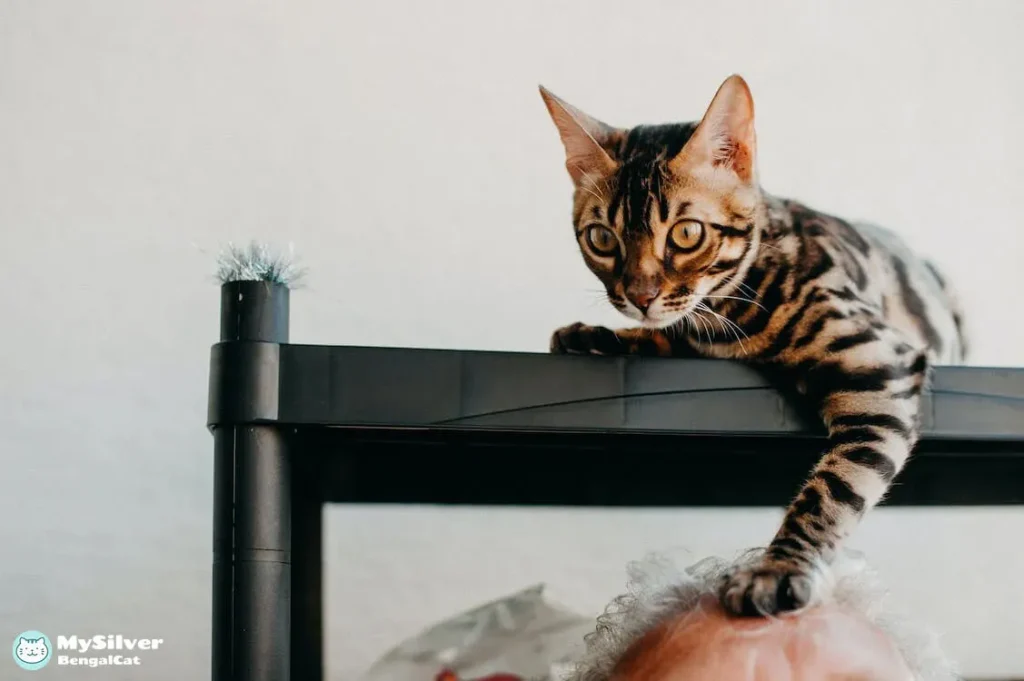
- Timely grooming: Brushing your Bengal cat’s coat at least once a week can help remove loose hair and distribute natural oils throughout the coat, improving its overall condition and shine. Use a brush specifically designed for cats to avoid hurting their sensitive skin.
- Balanced diet: Feeding your Bengal cat a healthy and balanced diet is essential to maintain a healthy coat and reduce shedding. Ensure your cat has high-quality cat food containing all the necessary nutrients, including omega-3 and omega-6 fatty acids, which help promote healthy skin and coat. Learn everything about feeding guidelines of a Bengal cat.
- Providing Fresh Water: Make sure your Bengal cat always has access to fresh, clean water. Dehydration can lead to dry skin and a dull coat, increasing shedding. Dehydration in Bengals may lead to kidney diseases as well.
- Deworming For Healthy Coat: Deworming is essential for Bengal cats to remove internal parasites. Heavy worm infestations can cause shedding due to malnutrition and stress. After deworming, Bengal cats’ health improves, resulting in healthier coats with reduced shedding. To deworm your Bengal cat at home, consult your vet for the right medication and follow their instructions. Monitor for side effects and maintain good hygiene. Regular vet checkups ensure ongoing care.
- Stress Management In Bengals: Stress can cause excessive shedding in Bengal cats. Ensure your cat has a comfortable and stress-free environment, with access to hiding places, toys, and scratching posts.
- Fleas control: Fleas and ticks can cause itching and irritation, leading to excessive shedding. Use flea and tick preventatives to keep your Bengal cat parasite-free. This can easily be done at home using special flea control sprays for cats.
Micronutrients for a Furry Coat in Your Bengal
| Micronutrient | Application | Sources |
|---|---|---|
| Taurine | – Controls inflammation and promotes wound healing – Helps maintain normal heart function – Ensures regular digestion and good vision – Maintains a healthy immune system – Promotes pregnancy and fetal development | – Chicken – Liver – Turkey – Tuna – Beef |
| Collagen | – Ensures good bone density – Hydrates the skin | – Fish – Chicken – Pork – Beef – Bone broth |
| Vitamin E | – Protects cells from oxidative damage – Improves immune function | – Chicken thigh – Chicken breast – Raw bacon – Ham – Salmon – Trout – Shrimp – Prawns |
| Omega-3 fatty acids | – Make hair follicles stronger | – Mackerel – Salmon – Tuna – Sardine |
So, Do Bengal Cats Shed? Final Verdict
Answering this question can be tricky. The simple answer is that Bengal cats lose a small amount of hair, which is much less than other breeds.
Some Bengal breeders may claim their kittens won’t shed, but that’s not entirely true. Bengal kittens shed, but it’s mainly their “baby fur” as they grow into adulthood.
Once a Bengal cat is fully grown, their coat becomes silky smooth and is less likely to shed significantly. However, there may still be some hair loss along the way.
Compared to most cats, Bengal cats may appear to shed very little, but they are not completely hairless like Sphynx cats. Owners should still expect some minimal and sparse hair loss.
Conclusion
It is important to remember that Bengal cat shed, like all cats. Even though their shedding is comparably lesser, it still needs to be maintained. Proper grooming and care can minimize shedding and keep your home clean and comfortable for you and your pet.
You can enjoy a happy and healthy life with your Bengal cat by understanding the factors that can influence shedding, taking steps to manage shedding, and providing your Bengal cat with the love and attention they need
FAQs




